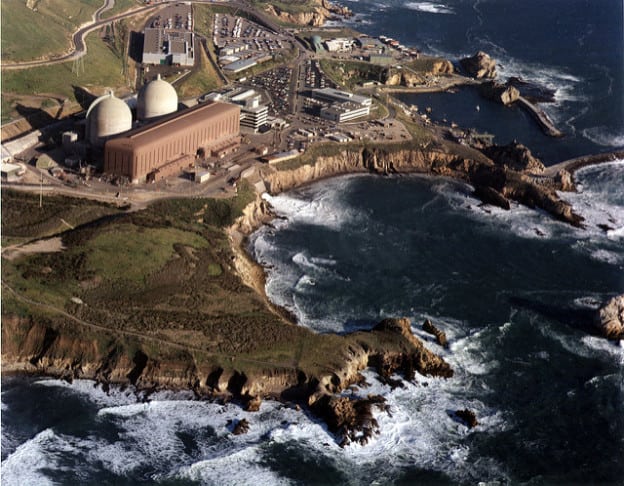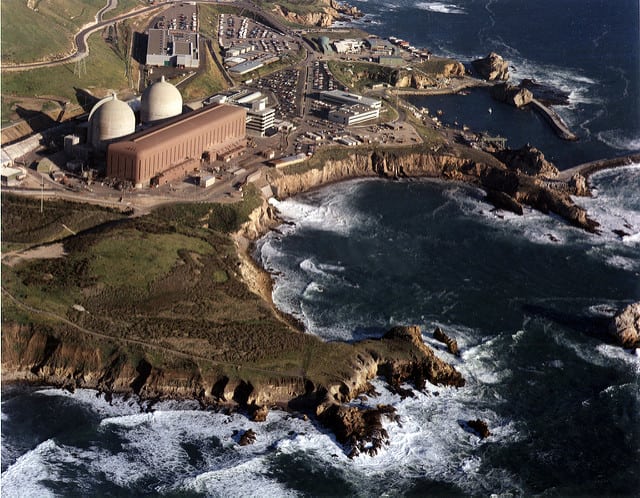Diablo Canyon Nuclear Plant Gets Legislative Approval for Operation to 2030
Credit to Author: Sonal Patel| Date: Thu, 01 Sep 2022 17:32:02 +0000

California’s lawmakers have passed Senate Bill 846, effectively offering Pacific Gas and Electric (PG&E) a pathway to keep the Diablo Canyon nuclear power plant open until at least 2030.
The bill, authored by Assemblymember Jordan Cunningham, a Republican from San Luis Obispo, and Democratic state Sen. Bill Dodd of Napa, passed the California Assembly by 69–3 on Sept. 1, and 31–1 on the Senate Floor on Aug. 31.
If signed by California’s governor, as is expected, the measure will make up to $1.4 billion available to California’s Department of Water Resources (DWR) under a newly established Diablo Canyon Extension Fund in the state treasury. The funds would then be doled out as loans to facilitate the extension of Diablo Canyon’s operating period. As significantly, the bill specifies that the final compliance date of the once-through cooling policy for the power plant is Oct. 31, 2030.
A Tempered but Important Win for Nuclear Advocates
Passage of the bill, which California’s legislature pushed through along with hundreds of bills as the legislative session came to a close, represents a tempered win for Gov. Gavin Newsom. Newsom wanted to extend the life of the plant by 10 years—until 2035.
PG&E announced in June 2016 that it would shutter the 1,138-MW Unit 1 and the 1,151-MW Unit 2, both Westinghouse pressurized water reactor units upon the expiration of the reactors’ operating licenses—November 2024 for Unit 1 and August 2025 for Unit 2. The units began operation in 1985 and 1986.
When PG&E announced the plant’s pending retirement, it cited challenges of managing “over-generation and intermittency conditions under a resource portfolio increasingly influenced by solar and wind production,” as well as potential costs for retrofits so the station could comply with a May 2010 California Water Resources Control Board policy restricting once-through cooling (OTC) systems for all the state’s water consuming power plants. Industry observers, however, suggest PG&E negotiated an agreement with anti-nuclear environmental groups, based on a flawed study that until recently was broadly accepted by California’s legislators and regulators.
While the California Public Utilities Commission (CPUC) approved PG&E’s application to shutter the plant in January 2018, an initiative to replace the plant’s power with zero-carbon options was enshrined in state law by California’s former Gov. Jerry Brown in September 2018. Gov. Newsom’s administration in April 2022, however, suggested retirement of the nuclear plant may adversely affect California’s stretched energy system. The governor in June indicated PG&E may be mulling applying for the Biden administration’s $6 billion Civil Nuclear Credit (CNC) Program—a measure aimed to keep struggling nuclear power plants online—to keep Diablo Canyon open past its scheduled closure.
On Aug. 12, the governor proposed a plan, which in part includes giving plant owner PG&E a $1.4 billion loan. The proposal garnered widespread support from nuclear advocacy organizations, trade groups, power companies, and environmental and citizen groups. It also had the backing of U.S. Sen. Dianne Feinstein. The California Independent System Operator (CAISO), which operates a large part of California’s grid, and the California Energy Commission have also suggested keeping the plant open could fill capacity needs, reduce gas burn, as well as provide certainty for OTC gas retirements and reduced risk for load growth, which is slated to soar as the state moves toward higher electrification.
The measure, however, has been fiercely opposed by some energy experts and environmental groups, who have raised issues related to safety, and the plant’s proximity to seismic faults. The bill also faced contentious debate in the state’s legislature.
PG&E’s Complex Next Steps
The plant’s owner, PG&E, has remained largely quiet as the debate about its voluntary plan to shutter the reactors has raged on. Diablo Canyon’s capacity accounts for nearly 30% of its overall 7.7 GW generation fleet. The remainder comes from 2.6 GW of conventional hydroelectric power systems (from 103 generating units at 64 powerhouses); the 1.2-GW Helms pumped storage station; three gas-fired plants (657-MW Colusa, 580-MW Gateway, and 163-MW Humboldt Bay); and several photovoltaic facilities amounting to about 152 MW of nameplate capacity.
PG&E has told its shareholders that while it is committed to environmental objectives, it is also pursuing policies and programs that enable safe, reliable, and affordable clean and resilient energy for its customers. “Looking ahead, the utility expects its [greenhouse gas (GHG)]-free energy supply mix of renewable, large hydroelectric, and nuclear generation resources to remain elevated while Diablo Canyon continues to operate,” it said. However, “Once Diablo Canyon ceases operations in 2025, the utility expects its percentage of GHG-free electricity to decrease substantially,” it added.
Still, the utility in its financial documents highlights risks associated with running the plant. Along with substantial costs related to regulations and orders from the Nuclear Regulatory Commission (NRC), the utility has been making annual payments to mitigate the impacts of its water discharges and is expected to pay approximately $38 million in total for the plant’s operating years 2015 through 2025. It also says it routinely faces public concern about the safety of nuclear generation and nuclear fuel. “Some of these nuclear opposition groups regularly file petitions at the NRC and in other forums challenging the actions of the NRC and urging governmental entities to adopt laws or policies in opposition to nuclear power.” Still, the utility has opposed an earlier closure, warning that if public pressure forces it to cease operations before the plant’s licenses expire in 2024 and 2025, it could face an unrecovered investment of $1.16 billion.
How the company will navigate the pathway to extend the plant’s operations through at least 2030 remains unclear. Patti Poppe, PG&E CEO, offered some insight during a July 28 earnings call. “We are exploring the possibility of keeping this plant open for California’s benefit. It is not an easy option and it will require much coordination between the state, multiple regulatory bodies and PG&E as well as many others impacted by the outcome of this decision,” she said.
The utility’s first order of business may be to secure “certainty on decision-making,” Poppe added. “We have to secure casks. We have to order fuel. There are some very near-term items, actions that we would need to take if, in fact, we changed the posture of the plant. And so with that, we’re working very closely with the state first to understand what are the needs and what do we need to do to move forward,” she said. “This is not an easy option. Legislation will have to be passed. The permitting and relicensing of the facility are complex. And so there are a lot of hurdles to be overcome in order to move forward.”

A Triumph for Nuclear
While more details will emerge over the next few weeks on PG&E’s next steps, Senate Bill 846’s passage has prompted optimism across the power industry.
The nuclear industry suggested the vote by California’s lawmakers to preserve the state’s only nuclear plant underscores a change in attitude about nuclear. “California’s decision to preserve its current nuclear capacity mirrors actions we have seen around the country and around the world as governments recognize the critical role nuclear plays in decarbonizing the electric sector and entire economies,” said Maria Korsnick, president and CEO of the Nuclear Energy Institute. “California’s passage of the Senate Bill 846 underscores nuclear’s essential role in achieving a reliable, affordable and carbon-free energy transition. The bill offers a pathway for PG&E to extend the operation of the Diablo Canyon, which will help the state reach its climate goals and ensure a reliable clean energy workhorse continues to serve residents,” she added.
American Nuclear Society (ANS) President Steven Arndt and ANS CEO/Executive Director Craig Piercy also recognized the bill’s passage as a victory for nuclear advocates. The achievement was in large part spearheaded by Diablo Canyon’s environmentalist and labor allies, grassroots nuclear supporters, and California ANS members, they noted. “Amid a scorching heatwave that is threatening blackouts, California’s lawmakers made the right choice in preserving California’s largest and most reliable clean energy source, Diablo Canyon nuclear power plant,” they said.
The Department of Energy also issued an optimistic statement. “I’m extremely pleased to see California extending the operation of Diablo Canyon. These reactors critically underpin our nation’s decarbonization goals and their 24/7 power will support grid stability for consumers in the state during our transition to net zero,” said Katy Huff, who leads the Office of Nuclear Energy as the assistant secretary.
—Sonal Patel is a POWER senior associate editor (@sonalcpatel, @POWERmagazine).
Editor’s note: This story is being updated
The post Diablo Canyon Nuclear Plant Gets Legislative Approval for Operation to 2030 appeared first on POWER Magazine.